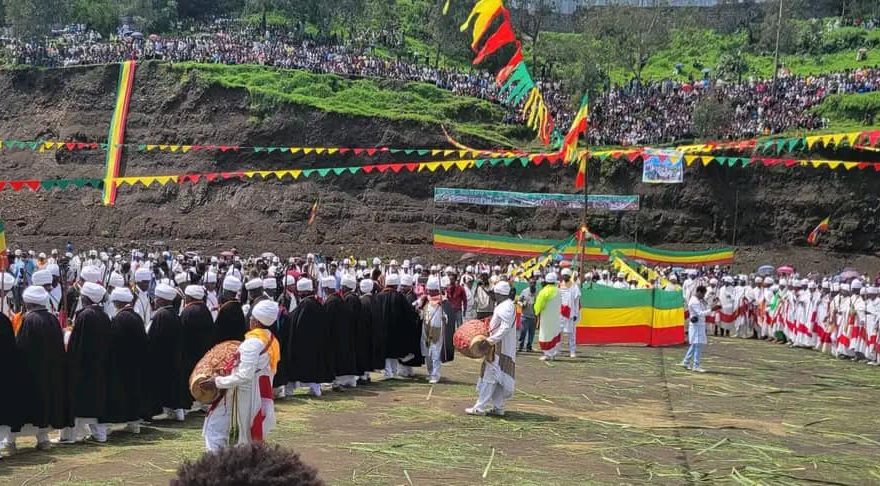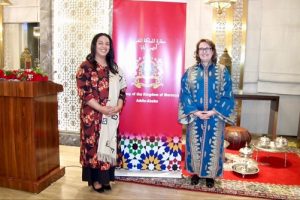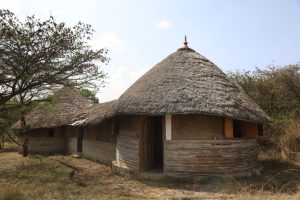
BY MULUGETA GUDETA
The season of holidays and festivities is downing on us so to say beginning with Buhe and followed by Tsome Filseta as precursors to the last and biggest celebrations yet to come in September or the first month on the Ethiopian calendar. This week, orthodox Christians observed Tsome Filseta or the Fast of the Ascension, which “is one of the seven canonized fasts of the Ethiopian Orthodox Tewahedo Church. This fast lasts for 16 days starting on August 7th and ends on August 22nd.”
According to online available data Ethiopia has 13 official holidays in addition to the non-official ones like Felseta that falls on August 22, or Nehassie 16 in Ethiopian calendar. “The Federal Democratic Republic of Ethiopia currently celebrates 13 national holidays each year. A majority of the holidays celebrated in Ethiopia are based on religious beliefs. Many of these holidays occur on different dates each year because they are calculated using the lunar cycle of different calendars.” Muslim and Christian holidays are the major ones and there is on average one holiday every month, which is too many by global standards. Even the most developed countries observe two or three national holidays that have real significance to nation building, peacemaking or independence while they leave the religious holidays to the public to observe freely.
The proliferation of unofficial or religious holidays in Ethiopia may have serious implications to the economic and social life of the people because holidays mean days off when people stay at home to observe the holidays with feasts and music instead of going to the fields for farming or to office or factory for productive work. There is no available statistics on this matter, but it is generally estimated that the working hours lost during holidays may be staggering to say the least.
According to an online article entitled, “The Ethiopian Calendar: Important Dates in 2022”, Ethiopia uses a different calendar to the majority of the rest of the world, owing to a different calculation of the Biblical Annunciation to the Gregorian calendar. Ethiopians use the Incarnation Era to indicate the year, which places the Annunciation of the birth of Jesus on March 25, AD 9 in the Julian calendar.
On the other hand, Europeans adopted a different calculation for the Annunciation which placed it eight years earlier, meaning that there exists a gap of 8 years between the start of the Ethiopian calendar and the Gregorian.
The Ethiopian calendar is derived from the Egyptian solar calendar but adds a leap day every 4 years without exception. Like the Egyptian Coptic calendar, the Amharic calendar comprises 12 months of 30 days each, with an additional month of just 5 or 6 days, depending on the year. Ethiopian calendar months begin on the same days as Coptic calendar months but are instead named in Ge’ez, the ancient language of northern Ethiopia and southern Eritrea.”
Ethiopia is a land of many good things. It is sometime portrayed as land of 13 months of sunshine, a land of contrasts, diversity and bounty. These are the official and/or the tourist poster views propagated by the media and those of us who uncritically accept everything about Ethiopia as something perfect, immutable or beyond reproach. This may be a reflection of deep nationalism, love of country or feeling of entrenched pride born of the country’s long history of independence that permitted it to live beyond the reach of European colonialism.
Ethiopia also thrives on modern day myths. It was long considered the bread basket of East Africa, the water tower of Africa, the cradle of civilization and the land of love, hospitality and the origin of many things like coffee, flora and fauna like the Walia Ibex. All these attributes may be true depending from which perspective we are looking at these things.
To begin with, Ethiopia is truly a land of many great things as expressed in its cultures, architectures, literature or music. It is also true that Ethiopia is a land of ancient civilizations as reflected in its churches, house buildings, its cave paintings and its foods and drinks, considered some of the healthiest in the world. Unfortunately, there are also many things about Ethiopia that need rethinking or reconsideration.
The myth of Ethiopia being the bread basket of East Africa was propagated by the media during the imperial era when the size of its population did not exceed 20 million and food was not a challenge of daily survival. Ethiopia’s pre-and post-imperial history is replete with famine crises that claimed tens if not hundreds of thousands of peasants lost their lives. According to Wikipedia Encyclopedia, “The 1983–1985 famine in Ethiopia was the worst famine to hit the country in a century, it affected 7.75 million people (out of Ethiopia’s 38–40 million) and left approximately 300,000 to 1.2 million dead. And 2.5 million were internally displaced whereas 400,000 refugees left Ethiopia.”
The source went on to say that, “The famine of 1983–1985 is officially ascribed to drought. In recent years, the favored explanation for the famine of 1983–1985 is “war and drought”. According to the organizations Human Rights Watch and Oxfam UK, the famines that struck Ethiopia between 1961 and 1985, and in particular the one of 1983–1985, were in part created by the government’s military policies, specifically a set of so-called counter-insurgency strategy and for «social transformation» in non-insurgent areas.”
Many scholars and academics have written articles and books on the 1983-84 famine attributing its causes to drought and civil war. The Derg regime that was in power at that time could not curb the Biblical scale of the humanitarian catastrophe simply because of the usual neglect, silence and cynical irresponsibility as the devastations occurred at a time when the Derg was celebrating the tenth anniversary of the revolution and its own institution as the ruling party.
Famine is still part and parcel of Ethiopia’s social fabric as the country has not yet definitively buried the old scourged that claimed millions of its people throughout the last few centuries and continues to do so as we write these lines. Under such bleak circumstances, Ethiopia may not be portrayed as the bread basket of Africa because there are many African countries that have met the food needs of their peoples and even export surpluses while Ethiopia is still suffering from chronic food deficit. The causes have not also changed: they are drought and famine.
The myth of Ethiopia being “the bread basket” of East Africa that was a propaganda stint devoid of substance was subsequently dead and buried. It may even be looked at as a vision or objective yet to be reached but has always eluded us. In a study paper entitled Food Security and Rural Vulnerability in Ethiopia: A Development Perspective by Alemayehu Lirenso, “Ethiopia has experienced large-scale famines for half a century. The famines of 1972/73, 1984/85, 1987, and 1998-2000 are all recent memories of mass starvations that affected the lives of hundreds of thousands of people and livestock population.”
Ethiopia is no doubt the water tower of Africa whatever this may mean. It is nonetheless hammers on the fact that there is plenty of water in Ethiopia from big and small rivers in addition to the country being the land of three months of abundant rains that feed its agriculture until recently. However, Ethiopia’s “water tower” symbolism has found new dimension of credibility with the construction of the biggest electric power dam in Africa with the building of the GERD.
Some facts may look mythical for some time and turn into real facts later on. This is true of the GERD that has revived the pride and of the Ethiopian people as “people of Africa’s water tower”.
Ethiopia is legitimately considered one of the cradles of human civilization without claiming the status of sole representative of this civilization because there are many countries that legitimately claim this mantle. The Chinese, the Greeks, the Europeans and Native Americans… are usually considered to be the owners of original civilizations dating back to many thousands of years. According to some views, “Mesopotamia, the area between the Tigris and Euphrates Rivers (in modern day Iraq), is often referred to as the cradle of civilization because it is the first place where complex urban centers grew.”
According to other views, the five cradles of civilization are the following: “If you look back at the time when humans first decided to give up their nomadic, hunter-gatherer lifestyle in favor of settling down at one place, six distinct cradles of civilization can be clearly identified: Egypt, Mesopotamia (present-day Iraq and Iran), the Indus Valley (present-day Pakistan and Afghanistan)” According to what we may call “Ethio-centric” view, Ethiopia is one of the cradles of civilization. This may be true or not but what matters according to many students of civilizations is what a country makes of its past civilization in order to redeem its present. In this sense, we Ethiopians have not done a great deal of work to reclaim our past. We may perhaps start by reconsidering the number of working days our holidays are taking and stick to the most important ones and work harder if we want to go back to our glory days, as some people claim.
Too many holidays are not only drains on our resources in these hard times. They are also damaging to our health because of our wrong conception that holidays times of big eating and big drinking and too much marry making. Too much of anything is indeed damaging as the old adage has it. This is also true to us Ethiopians who are big marrying makers and, I am sorry to say it, not hard working in general.
The Ethiopian Herald 25 August 2022





